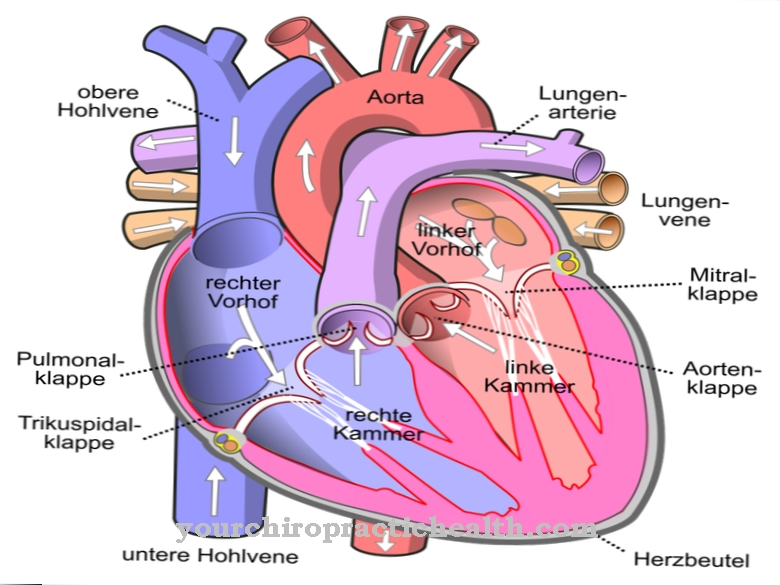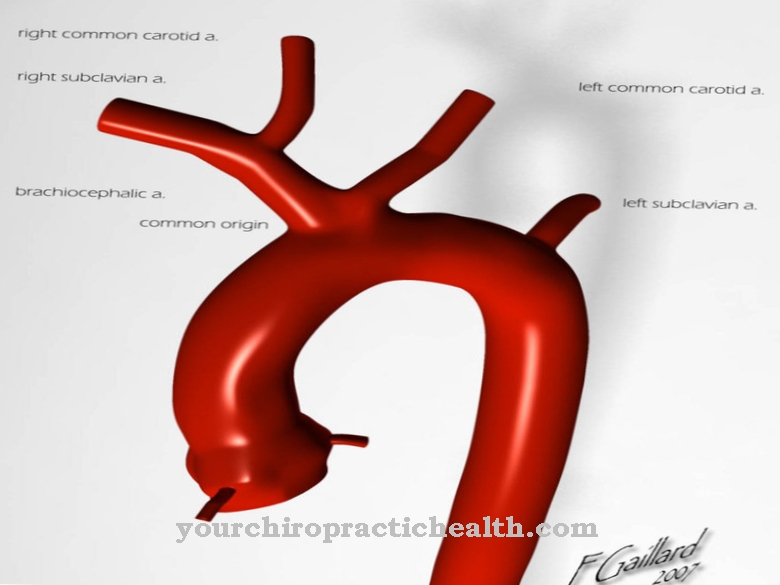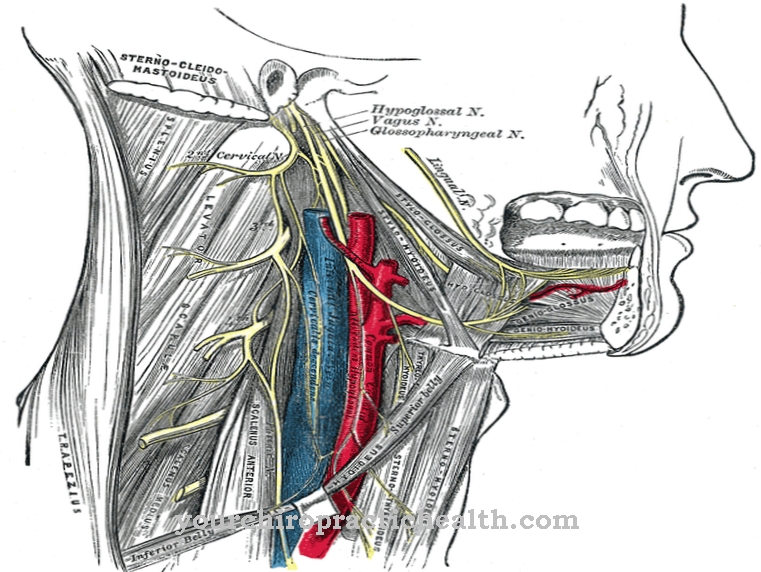Of the Teres major muscle belongs to the skeletal muscles that humans can control at will and forms part of the rotator cuff. It extends from the lower edge of the shoulder blade to the upper arm and participates in the movements of the arm.
What is the teres major muscle?
On the back is the teres major muscle, whose name means "large round muscle“Means. Its origin lies at the lower edge of the shoulder blade (at the angulus inferior scapulae) and it attaches to the humerus. The insertion of the teres major muscle is located on the minor tuberosity crest on the front of the bone, on which the large back muscle (Latissimus dorsi muscle) starts.
The teres major muscle is part of the skeletal muscles and consists of striated fibers, the pattern of which is based on the structure of the muscle. Within the skeletal muscles, the teres major muscle can be assigned to the shoulder muscles. According to some definitions, it belongs to the rotator cuff, while others consider it to be merely a secondary stabilizer of the cuff. The conscious control of the teres major muscle is based on motor areas of the brain and runs through sympathetic nerve fibers.
Anatomy & structure
Nerve pathways that supply the teres major muscle run through the spinal nerves of the neck. The commands for tension and relaxation come mainly from the subscapularis nerve, which also supplies the subscapularis muscle with neuronal stimuli.
More rarely, the teres major muscle also receives nerve signals from the thoracodorsal nerve, which belongs to the brachial plexus and also controls the large back muscle (latissimus dorsi muscle), or from the axillary nerve, which is part of the same nerve plexus and mainly for the deltoid muscle and the muscle teres minor is responsible.
The tendon of the teres major muscle is 5 cm long and connects to the humerus via a bursa (bursa synovialis), whereby the bursa reduces friction. The muscle is surrounded by a sheath of connective tissue; its internal structure consists of muscle fiber bundles, which each combine several muscle fibers. The muscle fibers form the muscle cells, which, however, are not separated from one another like other body cells. Instead, they form a continuous tissue with many cell nuclei. Myofibrils, whose sections (sarcomeres) consist of actin / tropomyosin and myosin filaments, run through the muscle fibers.
Function & tasks
The motor end plate is located at the transition from a motor nerve fiber to the muscle. The electrical action potential from the axon of the nerve cell triggers the release of neurotransmitters here, as in an interneuronal synapse.
These messenger substances (often acetylcholine) produce the endplate potential in the muscle, which spreads through the cell membrane of the muscle cell, channels in the cell (T-tubules) and the control system of the sarcoplasmic reticulum. In response to the electrical potential, the sarcoplasmic reticulum releases calcium ions, whereupon the thread-like myofilaments slide into one another, thereby shortening the muscle. When the nerve no longer stimulates the muscle, the electrical endplate potential also disappears, the calcium ions remain in the sarcoplasmic reticulum and the muscle relaxes again.
The job of the teres major muscle is to move the arm in certain directions; in doing so he participates in the internal rotation, which turns the arm inward, and the retroversion, which pulls it backwards. The large round muscle is also active when the upper arm moves towards the body (adduction). The latissimus dorsi muscle is also involved in these movements. In addition, the teres major muscle, together with the pectoralis major muscle and the latissimus dorsi muscle, stabilize the shoulder.
Diseases
As part of the rotator cuff, the teres major muscle can be affected by conditions that affect this anatomical structure. When the rotator cuff ruptures, the tendon that connects the muscle to the bone tears.
The rupture causes pain and hinders the mobility of the arm and shoulder area. As one of the stabilizing muscles of the cuff, the teres major muscle is of great importance in rehabilitation after injuries to the rotator cuff, as it can relieve the damaged structure. This is a common case of impingement syndrome, when the shoulder muscle tendon is pinched.
In myofascial pain syndrome, the muscle hardens as a result of a persistent state of tension. The tension in the teres major muscle can affect the mobility of the shoulder muscle and thus the mobility of the arm. The hypertension also causes pain, especially when moving and putting pressure on the affected area. Such a trigger point arises, for example, from overloading and fine tears in the muscle. Movement pain can also be caused by other causes, such as inflammation of the bursitis (bursitis). Depending on the severity, it manifests itself in weaker or stronger pain, the area can be locally heated or swollen. Fluid may also collect in the tissue.
Occasionally the teres major muscle is not controlled by the subscapular nerve, but by the axillary nerve.This nerve runs in the armpit near the humerus - a place that is very prone to fractures. If the humerus is broken, the surrounding tissue can be damaged and the axillary nerve can also be affected. Lesions on the nerve are also possible when the shoulder is dislocated (dislocation). Regardless of the cause, injuries to the motor nerve fibers that control the teres major muscle can limit the muscle's ability to move. This also applies to the other two nerves (subscapular nerve and thoracodorsal nerve).
























.jpg)



